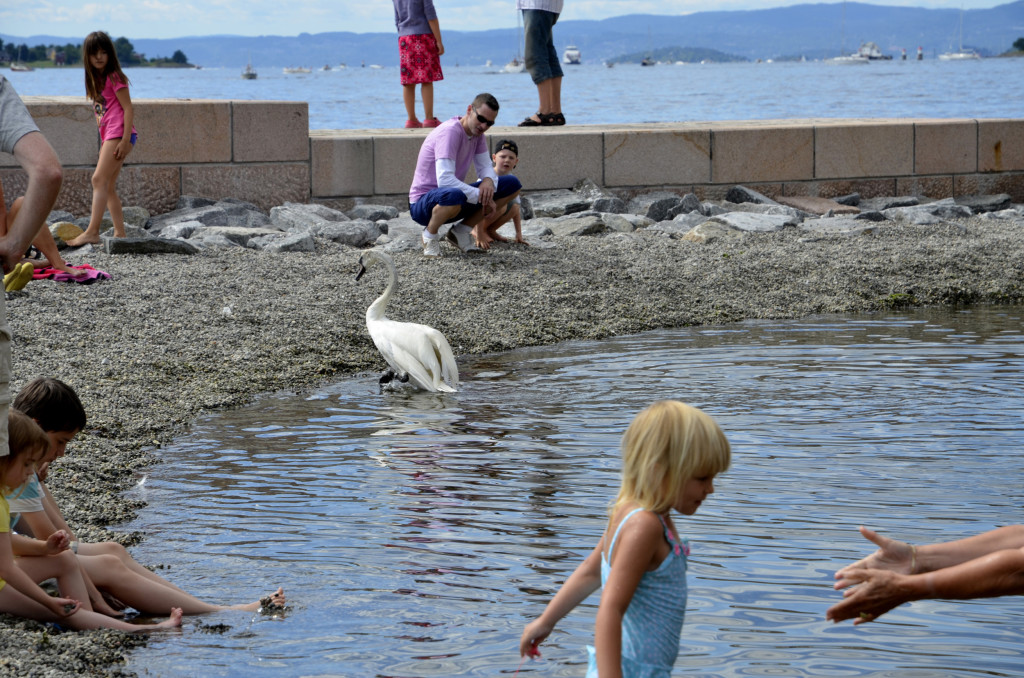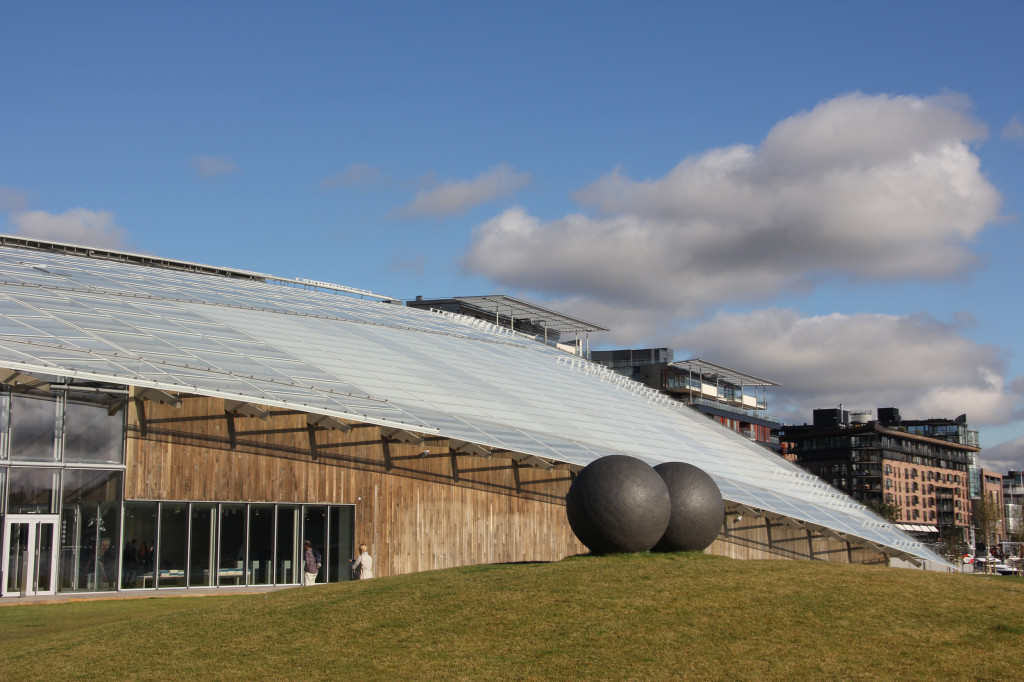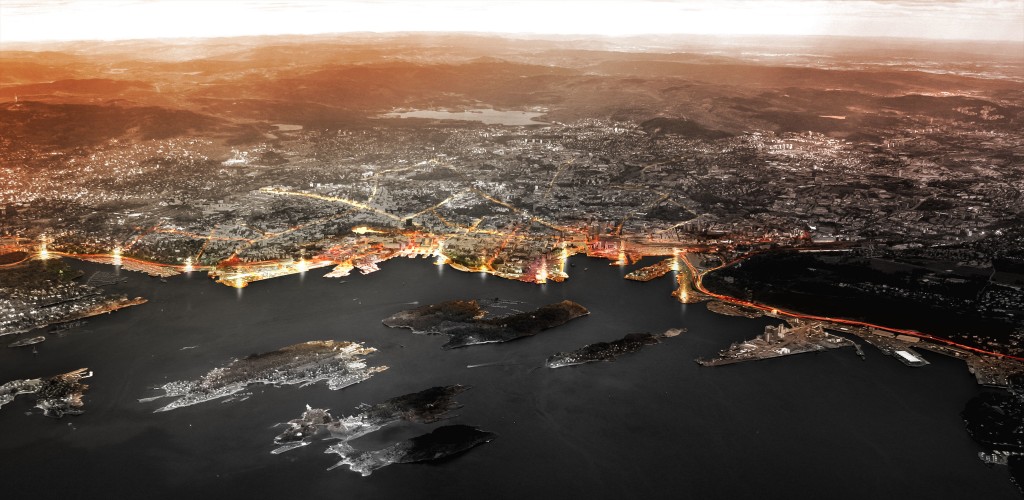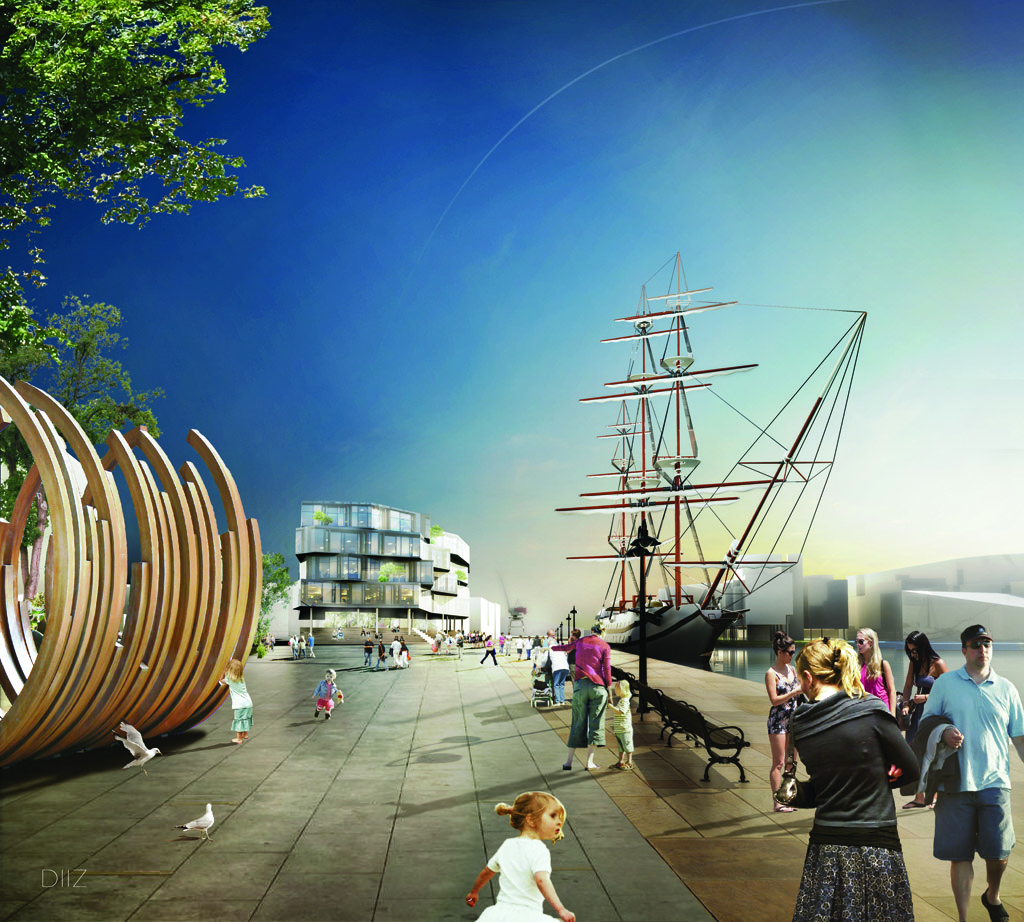Background
From Port of Oslo perspective the discussions regarding the Waterfront development in Oslo started long before the word “Fjord City” emerged in 1998.
Already in mid of the 1980-ties we had an ongoing discussion about the use of city central parts of the port and in 1986 the Port submitted a plan trying to establish borders between the port and city although much of port areas was accessible for the public.
In beginning of the 1990-ties it became obvious for the port administration the need of relocate parts of the port activities further away from central city functions and dwelling areas. The need for larger coherent port areas became clear during these years with increasing containerization of general cargo. The port areas in the city center did not have such opportunities.
To meet the challenges of a changing port world the Port administration in 1995 started up the work with a comprehensive port plan with a planning horizon of 20 years. During the process no stone were unturned. Studies regarding floating terminal areas, moving port some activities into caves in the mountains behind the existing port areas, new handling structures and equipment were undertaken and the conclusions from the reports were used in the final plan.
During the process with the strategic port plan in late 1990-ties, the location for the new opera house in Oslo was heavily debated. In 1998 the Port supported the Bjørvika location, an area the port planned for transfer to city development. This location was finally chosen by the Norwegian Parliament in 1999 and the Opera house in Bjørvika was inaugurated in 2008.
The Port administration submitted in 1998 the strategic plan for the port’s development for the period to 2020. The main recommendation in the plan was to concentrate the port activities I the southern part of the existing port and extend these areas with land reclamation and building of new berths. The existing cruise and ferry terminals in the central part of the port should remain there. The port activities in the central and western part of the port should be phased out as new terminal areas in the south were ready for use. Around 50 ha of the existing port areas could be transformed into city development by following this plan. The recommendation was approved by the Harbor Board and submitted to the City Council.
In parallel with the planning work undertaken by the Port, City Planning Authority started its own planning project for the whole waterfront. This planning work ended up in a plan named “Fjord City – Port City”. The main issue in the plan was to make a choice between a “Fjord City” or a “Port City”. The City Planning Authority recommended the City Council to go for the Fjord City alternative, with the main grip to relocate all container handling lo/lo outside Oslo port and reduce the cargo handling to a minimum.
Fjord City
In January 2000 the City Council voted for the “Fjord City” alternative and the Port Administration revised the Port plan. The revised port plan was submitted in 2002 with a reduced planning period to ten years and consequently a reduction of the land needed for port activities, but the main recommendation to concentrate the cargo port in the southern part was kept with building a new container terminal. The City Council voted for the revised plan in 2003, but the container terminal should be temporarily until a regional solution could be found.
All the land, buildings and infrastructure obtained by the Port during centuries belongs to the port by law and revenues from sale shall be used by the port for new investments. The Harbour Board was very concerned about reducing the financial risk for the port in involvement in city development and got a governmental permission to organize city development projects into daughter companies.
In 2002 was the Port eager to speed up the decision process about the Port’s future and announced that the port activities in a smaller terminal in the west harbour, Tjuvholmen, would be phased out in 2003-2004 and the land transferred into city development.
 Text Children outside museum: Oslos first “City beach”, opened at Tjuvholmen in 2012. Children can take a swim near the City Centre. (© Lars Finholth / Port of Oslo).
Text Children outside museum: Oslos first “City beach”, opened at Tjuvholmen in 2012. Children can take a swim near the City Centre. (© Lars Finholth / Port of Oslo).
The Port Administration arranged an architectural and sale competition for the area. The winner got opportunity for first bid on the area. A group of Norwegian city developers won the competition with Nils Torp as leading architect. A large part of the port’s sale revenue was dedicated to a public attraction. The city development started in 2005 and the whole area will be completed in 2013. The public attraction, Astrup-Fearnley Museum, drawed by the famous Italian architect Renzo Piano, was inaugurated in September 2012.
 Text New Museum: Astrup Fearnley Museum designed by the famous Italian architect Renzo Piano opened at Tjuvholmen in 2012. Just outside the museum there is a sculpture park. The museum and the sculpture park was part of a gift to the City, incorporated in the agreement when the Port sold the area. (© Lars Finholth / Port of Oslo).
Text New Museum: Astrup Fearnley Museum designed by the famous Italian architect Renzo Piano opened at Tjuvholmen in 2012. Just outside the museum there is a sculpture park. The museum and the sculpture park was part of a gift to the City, incorporated in the agreement when the Port sold the area. (© Lars Finholth / Port of Oslo).
After long dragon discussions about Oslo’s need for well functioning port, the City Council voted for a solution with a permanent container terminal in the south part of the existing port and ferry and cruise terminals located as today. A symmetrical development of both port and new city areas should be adapted. This was basically in accordance with proposals from the Harbour Board for the Revised Port plan.
During the whole process Port of Oslo has taken an active role in the transformation of the former harbour areas into new city functions. Through our daughter company HAV Eiendom, the Port has been heavily involved in the process for establishing a new main library for the city in former port area and arranged an Architectural Competition for a new Munch Museum with a location in the same area in the vicinity of the Opera House.
Port Promenade A main string in the Fjord City is the borderline between the port and the city, expressed in a project called “Havnepromenaden”, the “Port Promenade”. This is a zone for pedestrians and cyclists along the Waterfront. The port has taken the responsibility for this project in areas that still belongs to the port. In development areas the responsibility is transferred to the developers through plans adopted by the City Council and in agreements with the Port’s daughter company HAV Eiendom.
 Along the waterfront a nine kilometer “Port Promenade” will create a space for activity in Oslo. ( © Rodeo White ).
Along the waterfront a nine kilometer “Port Promenade” will create a space for activity in Oslo. ( © Rodeo White ).
The port has through the whole process been very careful to underline it obligations both to national guidelines for good solutions for the cargo transport on national and the region level and to the City’s desire for Waterfront development. The port has made many compromises to accommodate these to opposite interests.
Next large area to be City developed is Filipstad in the western part of Oslo. This area will be a new city within a city. The transformation area is situated a ten minute walk from Oslo City Hall, a new city district is going to be built. 5,000 people will make their homes on the former container port in Filipstad. Port of Oslo, as the owner of most of these areas will take an active part in developing this area.
 A city within a City. A ten minute walk from Oslo City Hall, a new city district is going to be built. ( © DIIZ ).
A city within a City. A ten minute walk from Oslo City Hall, a new city district is going to be built. ( © DIIZ ).
The conclusion so far is that we have together the city and port, tried to find solutions acceptable for both parts, striving to find solutions for the best, both for the Port and the City.
Major aspects for the future
Through appoved plans are the bounderies for the port areas mainly defined. Port of Oslo will in near future submit a comprehensive plan for the development of the port: Port of Oslo plan 2030.The plan is dealing with the development for all three parts of the port for the period to 2030 taking in account that there will be a growth in both cargo and passenger. In addition both EU and national authorities have set a goal for more cargo at sea in stead of road transport.
Transforming of old port terminals into modern facilities is costly and the Port is now spending revenues from land sale in renewing the port. Some of derelict areas will be kept by the Port and developed by itself in order to order to have good economical balance for future.